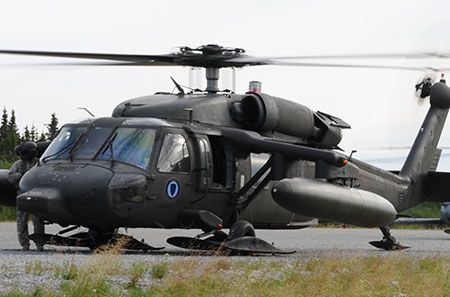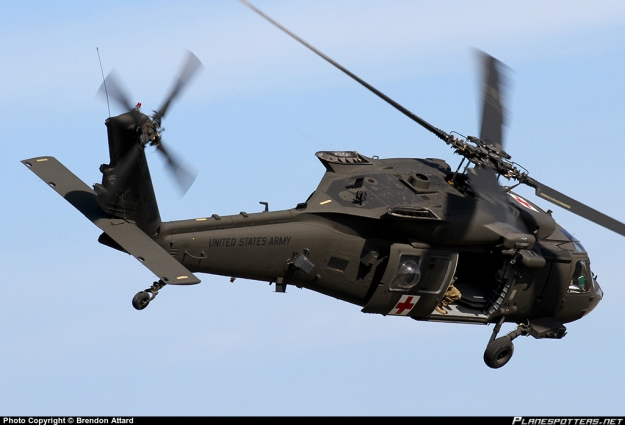Browsing Uh 60 Helicopter Rules and Conformity Demands

Regulatory Framework Overview
The governing structure regulating UH-60 helicopter operations encompasses a complex collection of criteria and policies established by aviation authorities. These regulations are made to make sure the risk-free and efficient procedure of UH-60 helicopters in numerous settings. The Federal Aeronautics Administration (FAA) plays a central duty in establishing and enforcing these regulations, which cover a large range of functional aspects, consisting of airworthiness requirements, pilot qualifications, upkeep requirements, and functional procedures.
Conformity with these guidelines is necessary for helicopter operators to keep the highest degree of security and functional stability. Failing to comply with these regulations can lead to serious effects, including crashes, injuries, and regulatory permissions. Helicopter drivers have to remain notified regarding the latest governing advancements and make sure that their operations are in full conformity with all appropriate policies and criteria.
Airworthiness Evaluations and regulations
In the middle of the governing structure controling UH-60 helicopter procedures, a crucial focus pushes compliance with Airworthiness Directives and conducting extensive assessments to promote safety and security criteria and functional integrity. Airworthiness Regulations (Advertisements) are provided by air travel authorities to deal with risky conditions in aircraft, consisting of the UH-60 helicopter, and mandate particular actions to be taken by proprietors or operators. Compliance with ADs is mandatory, and failing to stick to these directives can cause significant effects, including grounding of the aircraft.
Routine examinations are critical to making certain the airworthiness of UH-60 helicopters. By adhering to a rigorous evaluation routine, operators can find and address prospective concerns quickly, therefore enhancing the security and dependability of UH-60 helicopter procedures.
Pilot Qualifications and Training

Pilot training for UH-60 helicopters is comprehensive and covers a wide variety of subjects, consisting of aircraft systems, emergency situation procedures, navigating, and mission-specific training. Furthermore, pilots go through simulator training to exercise various emergency situation scenarios in a regulated environment. This training assists pilots develop the needed skills to manage tough circumstances properly.


Furthermore, ongoing training and professional development are important for UH-60 pilots to stay current with the most recent regulations, modern technology, and ideal methods. By investing in pilot qualifications and training, drivers can improve security, maximize performance, and ensure conformity with governing demands in the operation of UH-60 helicopters.
Functional Limitations and Demands
Pilot qualifications and training offer as the structure for understanding the functional restrictions and requirements related to UH-60 helicopter procedures (uh 60). These operational constraints are established to make certain the security of the staff, travelers, and the aircraft itself. Functional limitations might consist of elements such as weather, weight constraints, altitude restraints, and operational borders. It is vital for pilots to be well-versed in these constraints to make informed choices throughout flight procedures. Furthermore, conformity requirements, such as sticking to specific flight courses, communication methods, and emergency procedures, are crucial for preserving functional safety and governing compliance. Pilots should remain current with all operational constraints and requirements with normal training, briefings, and examines to minimize risks and make sure secure and effective UH-60 helicopter operations. By prioritizing adherence to these functional standards, pilots can boost the overall security and performance of their goals while supporting regulatory requirements. official website
Emergency Procedures and Conformity Screening
Reliable emergency situation procedures and complete conformity testing are vital elements of preserving operational safety and security and governing adherence in UH-60 helicopter procedures. Emergency procedures incorporate methods for different situations, including engine failings, click this link fires, hydraulic problems, and much more. Pilots and crew participants need to be skilled in these procedures to respond quickly and efficiently in emergencies. Normal conformity testing makes certain that the helicopter fulfills all regulative requirements stated by air travel authorities. This screening includes detailed assessments, checks, and analyses to validate that the airplane is airworthy and in conformity with all appropriate regulations.
Conformity screening likewise reaches devices onboard the UH-60, such as communication systems, navigating instruments, and security equipment. Making sure that all devices is functioning properly and fulfills regulative standards is important for risk-free operations. In addition, conformity screening might entail simulations of emergency situation scenarios to assess Continue the team's reaction and the helicopter's efficiency under tension. By focusing on emergency situation treatments and conformity screening, UH-60 operators can minimize threats and demonstrate their commitment to safety and security and governing conformity.
Conclusion
To conclude, adherence to regulatory framework, conformity with airworthiness directives, pilot credentials and training, operational limitations, and emergency procedures are vital for navigating the policies and demands of operating a UH-60 helicopter. uh 60. It is important for operators to prioritize safety and ensure full conformity with all relevant laws to preserve the airworthiness and operational integrity of the aircraft
Browsing the governing landscape bordering UH-60 helicopter operations demands a nuanced understanding of the intricate internet of regulations and conformity demands.Compliance with these laws is important for helicopter operators to keep the highest possible levels of safety and functional stability.In the middle of the regulatory structure regulating UH-60 helicopter operations, a crucial emphasis exists on compliance with Airworthiness Directives and carrying out detailed examinations to maintain security standards and functional dependability.Effective emergency situation procedures and comprehensive conformity testing are critical parts of keeping operational safety and regulative adherence in UH-60 helicopter operations. Normal compliance screening ensures that the helicopter fulfills all regulatory needs set forth by aeronautics authorities.
Comments on “Security First: Important Steps in UH 60 Helicopter Maintenance”